Shoulder injuries have been reported as the most common injury in agility dogs and account for 20% of all agility injuries. But why do agility dogs get shoulder injuries?
This article explores factors that may increase the risk of not only shoulder injuries, but also any musculoskeletal injury. While agility dogs are the focus, the information can also be applied to any sporting or performance dog.
Starting Activities Too Early
You’ve just arrived home with your new puppy and all you want to do is have fun with them. It’s not long before you start encouraging them to go up and down stairs, also letting them jump up and down off furniture. You may even encourage them to slip and slide on your wooden floors.
While having fun with your puppy sounds like a good idea, you need to understand that your puppies bones and joints are still growing. Doing too much too early can increase the risk of injuries, including shoulder injuries.
Appropriate exercise selection is even more important for agility dog owners. Just because your dog can jump, doesn’t mean they should. And just because they can start competing at 18 months of age doesn’t mean their body is mature enough before this time to train at full jump heights, participate in weaves, and A frames etc. Your dog has the potential for a long career ahead of them and it’s important to take the necessary time to keep them safe and injury free.
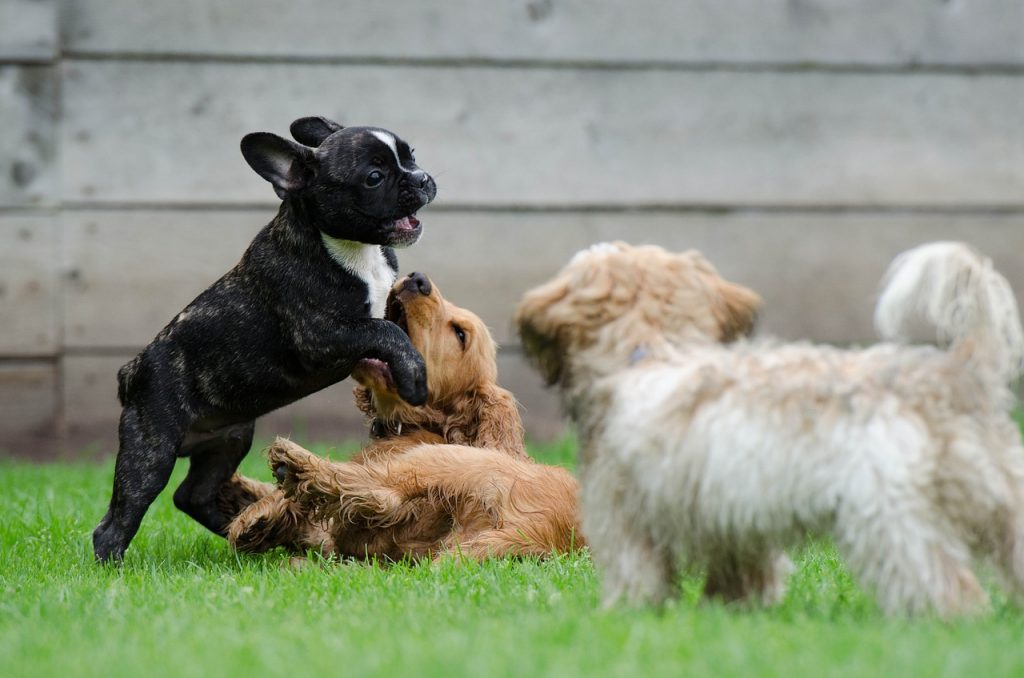
This doesn’t mean that you can’t start training and having fun with your puppy before they reach skeletal maturity (~12-18 months old). But you need to ensure the amount and type of exercise is appropriate for your puppies age. You can focus on skills like shaping and body awareness, rather than strength and power.
Growth Plates in Dogs
Growth plates are soft areas of developing cartilage found primarily at the end of long bones. In the shoulder joint there is the growth plate in the upper arm bone (humerus), as well as the shoulder blade (scapula).
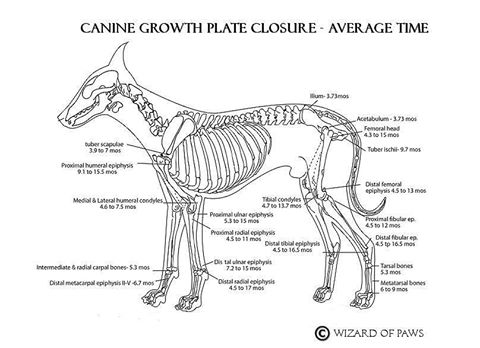
As your puppy grows, their growth plates close and harden into solid bone. Before closure however, these growth plates are vulnerable to injury. The upper arm (proximal humerus) growth plate is one of the last to close, at ~9-15 months.
In an adult dog, if a joint experiences a stress such as bending the wrong way or rotating too much, the bones are strong enough to withstand the forces. In a puppy, however, their muscles, ligaments and tendons are stronger than the growth plates in the bones. This can lead to a growth plate injury.
An injury to a growth plate can affect bone growth, leading to misshapen or shortened bones. This can then lead to changes in joint angles, which can make your puppy more prone to injuries when they’re older.
While most growth plates have closed by 12 months of age, some take longer. 18 months old is considered a safe age to ensure your puppies growth plates have closed.
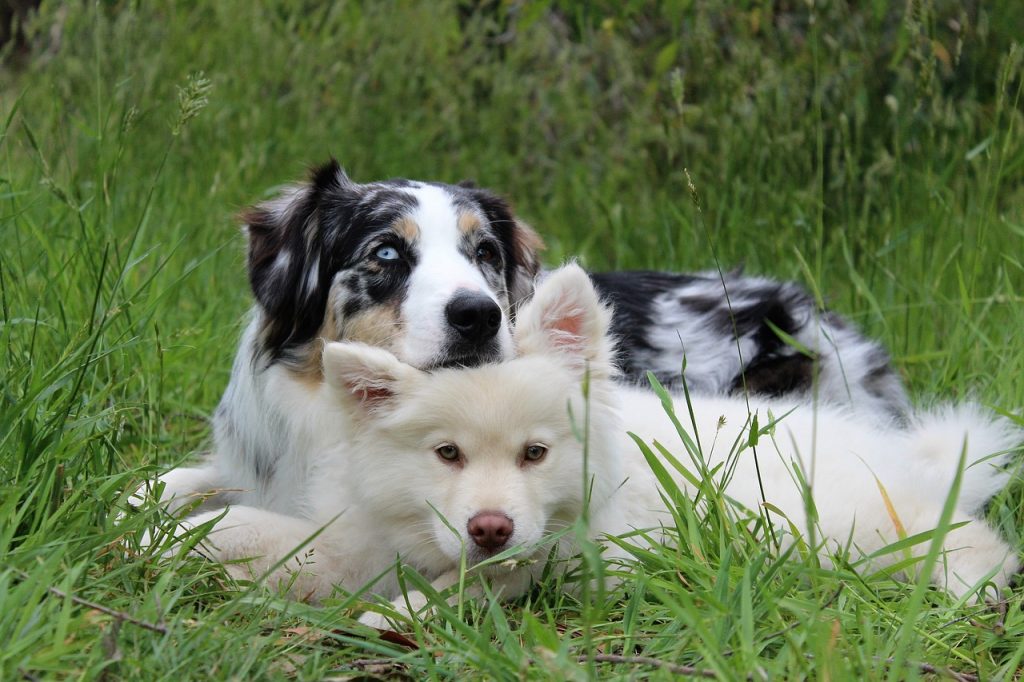
Osteochondritis Dissecans in Dogs
Osteochondritis Dissecans (OCD) is a condition that affects puppies joints, including the shoulder. It’s the result of abnormal development of cartilage in the joint, rather than in the growth plates of the long bones.
As a result of the abnormal cartilage growth, a flap can form in the joint, eventually becoming separated and lifted from the bone. This leads to inflammation and pain, and can be hard to diagnose.
OCD is a developmental disease that occurs in rapidly growing medium to large breed dogs, typically between 6 – 9 months of age. OCD is more common in puppies receiving too much energy (food) and calcium in the diet (source). It may also be caused by injury if there is a disruption to the blood supply of the bone (source).
Safe Puppy Exercise to Help Reduce Shoulder Injuries
Age appropriate exercise is an important component of puppy growth. Exercises may include:
- Balance and body awareness: develops awareness of where body parts are in space e.g. rear end awareness, different surfaces
- Skill training: how to learn, safe play, basic obedience
- Strength: Build strong muscles to support the joints e.g. shoulder and core strengthening
- Endurance: increase heart and lung conditioning so that intense activity can be maintained over time
The following guidelines are an excellent resource outlining the various stages of growth, and what kind of exercise is safe.
Ideal Body Weight
Ideal body weight is also a really important part of keeping your dog safe as they grow. Conditions like OCD and dysplasia more commonly develop in genetically predisposed, young overweight dogs. The same is also true of injuries. A heavier dog puts more forces through all of their joints, increasing the risk of injury.
Good Shoulder Strength
Good shoulder strength is of upmost importance for reducing the risk of a shoulder injuries in dogs, especially if they’re competing in agility.
The shoulder joint is an inherently unstable joint. This means that the surrounding muscles, and especially the rotator cuff muscles, work as a muscular support for the shoulder joint, protecting it from excessive movement. These muscles also protect the shoulder joint from concussive stress when landing from jumps, and decelerating / changing direction.
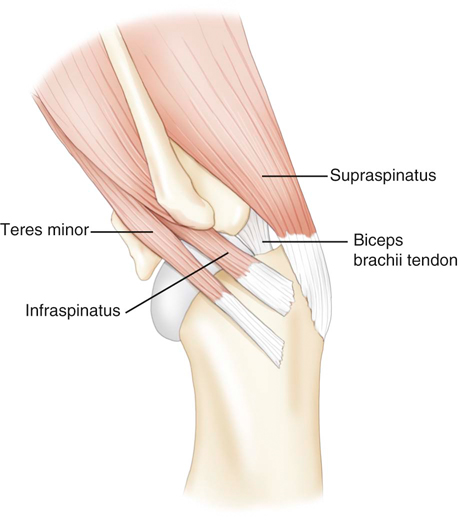
So when your dog twists and turns around corners, lands from jumps, and changes speed / direction, the shoulder muscles are what keep the shoulder joint safe. These muscles stop the shoulder from moving too much.
Signs of a Weak (or Injured) Shoulder include:
- Front limb lameness, ranging from a subtle head bob when walking to non-weight bearing
- Wide stance through one, or both of the front legs
- Short striding, change in turning circle, refusal to jump / weave
- Difficulty transitioning from positions, such as down to standing
- Poor shoulder / front limb control on balance exercises e.g. weight shift on three leg stand
While these signs may be more obvious in deconditioned dogs, subtle deficiencies may exist in an agility dog. These signs may also indicate a shoulder injury, so it’s important that your dog is assessed by a Vet (rehab / ortho / sports) or canine rehabilitation professional.
If you would like to read more about shoulder injuries in dogs, click here.
Improving Technique and Safe Use of Equipment
When trying to keep the shoulder safe, the most important technical factor is limiting excessive shoulder motion. Good technique along with a strong shoulder will make sure that the shoulder joint doesn’t have too much force going through it. While this may not prevent a shoulder injury in its entirety, it will go along way to minimizing risk.
Take weaving as an example:
If your dog is at the end of their available shoulder range of motion in abduction when weaving and they slip or miscalculate, there is no safety net. They’re already at the end of their available range of motion. This miscalculation takes them into a position past their safe range of motion, and may lead to excessive strain through the medial shoulder joint.
The same can be said for if your dog enters the weaves with too much speed. They have to decelerate to complete the weaves and this puts a lot of stress on their shoulder. Some dogs even use the weave pole to help decelerate which can put further stress on the area.
Now while these may not cause an acute injury right there, have this happen enough times and it will likely lead to a shoulder injury, especially medial shoulder instability (MSI).
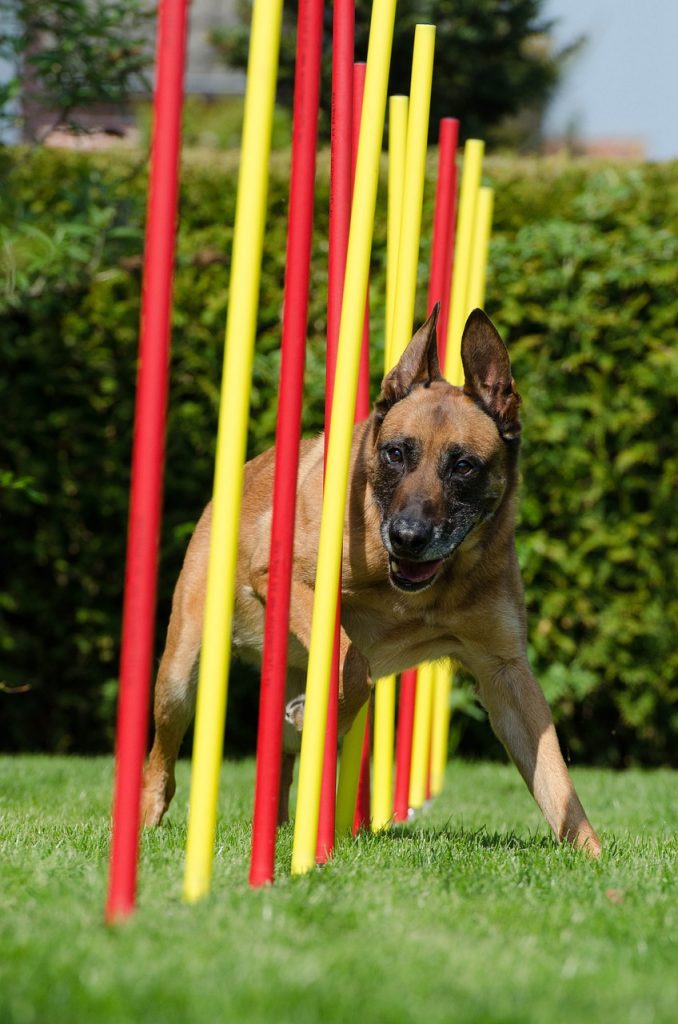
In contrast, if your dog has good technique and shoulder strength, they will never be at the end of their available range of motion during weaves. They will also enter the weaves with appropriate speed. If your dog slips or miscalculates they still have range of motion (and strength) available to keep them safe.
An experienced agility trainer with a good eye for technique and lines can be invaluable in identifying technical issues. A program can then be designed to make changes where required to ensure safe performance.
Also important for those participating in agility is that the equipment is safe to use. The ground can’t be too slippery or wet, the tunnel needs to be fixed properly. These steps will also help keep your dog safe.
General Conditioning
A lot of shoulder injuries occur in dog agility when fatigue has set in. Your dogs muscles are getting tired and they aren’t supporting the joints like they should be. Combine this with a mentally fatigued dog (or handler) and there may be at increased risk of injury.
When designing your training program, not only do you need to look at shoulder strengthening and specific agility skills, but you also need to consider general conditioning.
What are you trying to achieve with your dog? Is agility just for fun or do you want to compete? If you want to compete, how many runs over how many days will your dog need to be able to perform at their best for?
If events are several runs a day, over the course of several days, then you need to factor this into your training program. You can’t expect to train one or two nights a week for an hour then expect your dog to be able to perform all weekend. They’ll probably do it as agility dogs are usually high drive dogs, but are they safe?
Over Training can Increase the Risk of Shoulder Injuries in Dogs
Not only do you need to consider general conditioning, specific conditioning (e.g. shoulder strengthening), and the skill of agility, but you also need to make sure your overall program includes adequate rest.
Muscular growth and recovery occurs while resting in the 48 – 72 hours after an intense bout of exercise. If you continue to deplete your dogs recovery reserves by not allowing adequate time for the muscles to adapt and get stronger, it may lead to increased risk of injury.
An example of a program with adequate rest may include one day off a week, combined with a week off every three-four months. During these off days / weeks you may participate in active recovery with your dog (enrichment, walking, hydro, stretching, massage, or other holistic treatments).
Conclusion
Safe puppy exercise, good shoulder strength and general conditioning, as well as optimal technique are all factors that decrease the risk of shoulder injuries in agility dogs.
If you’re not sure how to formulate a program then you may consider getting in touch with both an experienced agility trainer and /or a certified canine fitness trainer (CCFT). The certified canine fitness trainer can help guide you with programming that not only considers the skill of agility, but also general and specific conditioning.
If you would like more information on shoulder injuries in agility dogs please click here. This article also discusses treatment options.

